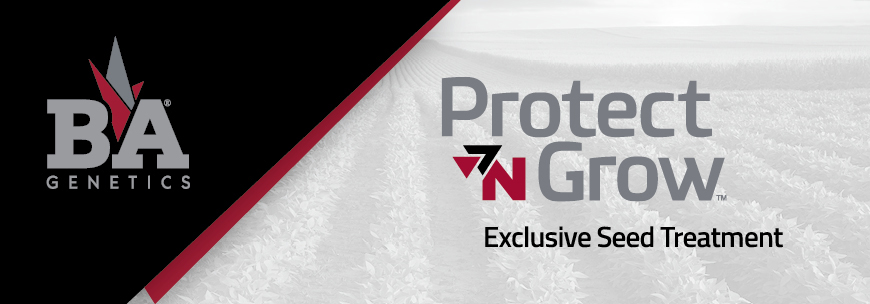Did you know that soybeans have a higher requirement for nitrogen than corn does per bushel??? Soybeans require five pounds of nitrogen per one bushel of yield. An 80 bu/ac soybean crop requires 400 lbs of nitrogen per acre, 50 to 80% of that nitrogen comes from the nitrogen produced by the nodules that colonize[…]
Read More
According to Gregg Adams, President and Co-owner of B&A Genetics, the tallest plants in a field are the first ones to emerge and they always produce the largest ears. Any plant that emerges later is usually one or more leaves behind and is something we call “runt pigs.” Like all “runt pigs,” late emerging plants[…]
Read More
It happens almost every year, we have great planting conditions for 4-5 days, then a cold-wet period happens. The ground becomes saturated, the temperature drops, and you worry about your corn coming up. Warm germination All seed in the industry is tagged with a warm germination, a lot of seed will test 90-95% germination (warm[…]
Read More
What are some ways farmers can get ready for the spring? First off, most farmers have already started bringing their planters, tractors and field cultivators into their shop for pre-season mainentence. If you haven’t started this process, it’s time to do so. Secondly, farmers need to start thinking about, or getting ready to apply spring[…]
Read More
This spring has been long and complicated. Some areas have seen a few windows of opportunity to apply pre-plant anhydrous ammonia and spray herbicides—and even plant a few fields. The priority now is to get seed in the ground, and at this point, pre-plant anhydrous ammonia is almost not an option with the recommended waiting[…]
Read More
As we approach mid-May, most areas are just starting to dry off after an extended period of wet weather. Since April 15, there has been roughly a total of two days in which conditions allowed growers work in the fields. Little to no burn down herbicides have been applied, and most fields show signs of weeds starting[…]
Read More
This year, a majority of corn and soybean planting has taken place during May. Along with rising soil temperatures comes rising weed and insect growth. This is why treating your seed to protect your investment is so important. Our exclusive Protect ‘N Grow seed treatment options for corn and soybeans offer layers of protection[…]
Read More
What factors do you consider when determining what seed to plant first? Chances are things like: field conditions, soil temperature, seed maturity, drainage, and weather come to mind first. However, with the spring we’ve had, weather is likely at the top of your list. When a few days of sun and 65-degree weather are followed[…]
Read More• What is the stage of the corn right now in your region? o Corn in the stage of R3-R-5 right now. • What is the stage of the soybeans in your region right now? o Soybean stages from R3-R5. Double crops are in about the V1-V3 stage right now. • What will we see[…]
Read More• How would you explain Climate FieldView to a farmer who has never used this system before? o Climate FieldView is an easy to use platform that collects all your data including, planting information, in-season health and harvest reports in one place to help you make critical decisions about your operation • What kind of[…]
Read More
